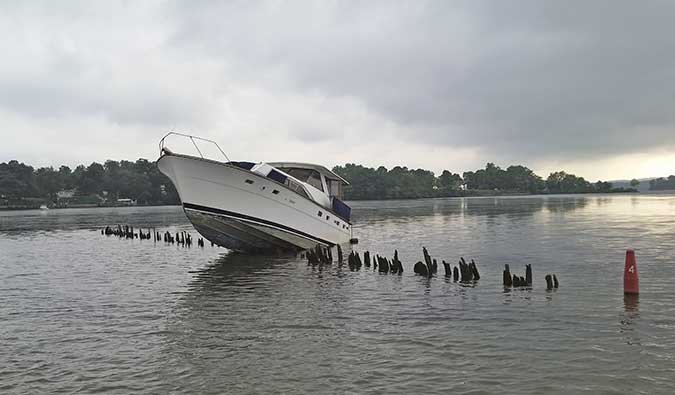Advertisement
The legal requirements and ramifications of COLREGS Rule 5.

Photo: Charles Maltbie
In September 2015, a U.S. Coast Guard-licensed captain delivering a 60-foot boat from the Newport, Rhode Island, boat show to another boat show in Norwalk, Connecticut, ran over a small fishing boat, killing the lone occupant. After a trial this spring, the captain was found guilty of, among other things, failing to keep a proper lookout. He said at trial that he hadn't seen the 23-foot boat.
Often termed the first rule of seamanship, Rule 5 of the International Regulations for Preventing Collisions at Sea (COLREGS) expressly requires that "[e]very vessel shall at all times maintain a proper lookout by sight and hearing as well as by all available means appropriate in the prevailing circumstances and conditions so as to make a full appraisal of the situation and of the risk of collision." Here's a practical perspective to assist the recreational boater.
All mariners must utilize sight, sound, and all available means to monitor the presence and location of other vessels to avoid risk of collision, stranding, and other hazards to navigation. Courts have interpreted this to include the power and speed of your vessel, other vessels, prevailing weather and sea conditions, visibility, traffic density, proximity of navigational hazards, as well as other allision (running into something stationary) and grounding risks.
For a recreational vessel owner or operator who takes to the seas alone, complying with the lookout rule is not exactly as cut-and-dried as one may think. If a skipper decides to act as his or her own lookout, there must be an unobstructed view from the steering station, and there should be no conditions that would require a posted lookout, such as restricted visibility or a crowded waterway.
Courts have made it clear that a boat owner cannot turn control of his boat over to someone who may lack experience or may be intoxicated. If the boat is being operated jointly and a passenger maintains some active responsibility for and control over certain aspects of navigation, there still must be a clear delineation of duties with the lookout obligation always being assigned and satisfied. They have also consistently refused to recognize an exception to the lookout rule on account of size alone. One court found that a 36-foot sailboat owner was partially at fault for failing to maintain a lookout when an oceangoing container ship collided with his sailboat.
BoatUS Members save at Boat Shows
Make sure to mark your calendars for two exciting events – the New England Boat Show, Chicago Boat Show, and Atlanta Boat Show. Don’t miss out on these incredible shows! BoatUS Members save 25% with code BOATUS25.
Here are the dates for each show:
